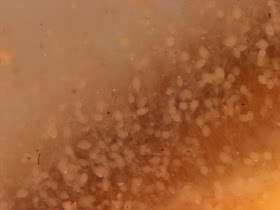When I was able to teach the IPM (Integrated Pest Management) section of the Master Gardener Training in Champaign, IL, one of the pests that I used as an example was oak gall. I was stunned to learn that most of the Master Gardener trainees there were not familiar with oak gall. To be honest, I can't go a week without getting asked about oak galls in my neck of the woods. In the last several years, the wasp species that causes various oak galls in oaks have been on the rise in the St. Louis, MO and Springfield, IL vecinity. In these "hot spots", if trees are present along a road, you can easily identify oak trees by their sometimes, obvious galls protruding from their limbs.
Here is a great fact sheet about oak galls:
http://web.extension.illinois.edu/southern/downloads/24689.pdf
Spring is here and homeowners are starting to work in their yards. If their oaks are plagued with oak galls, they "stick out like a sore thumb" right now, because oaks have not leafed out. The most common question that we hear is: "Will the oak galls kill my tree(s)?" The answer is NO, the oak galls will not kill your tree. Phil Nixon, University of Illinois Extension Entomologist says that it is sometimes very hard for someone to believe this when their oak tree is just thick with oak galls. Oak galls can girdle and kill branches, which in turn, can cause them to fall to the ground, and make them lethal weapons when hit by a lawn mower.
Here is a specific example to help explain why a tree infected with oak galls might die.
I went to church and was asked what to do about the oak on the church's property that was infected with oak gall. Here is the poor tree:
This is probably the worst case of oak gall that I have seen. Why might this be? Why is this oak so loaded with oak galls? When trees are stressed, they can be more susceptible to insects and diseases. So, I took a good look at this particular oak and asked myself, "What might be stressing this tree?".
The first thing that came to my mind was the stress of cars parking under this oak. This could compact the soil near this tree, as well as possibly damage roots. Also, I am sure that this tree has not been fertilized.
In my area, pin oaks seem to be more infected with oak gall. Pin oaks are notorious for being affected by iron chlorosis:
http://web.extension.illinois.edu/forestry/publications/pdf/forest_health/UIUC_Iron_Chlorosis.pdf
Basically, something is causing the iron not to be available to the plant, and causes the leaves to be lighter green in color and have dark, green veins. Here is a picture of a pin oak with iron chlorois from the ISU Plant Disease Clinic:
Iron chlorosis is just one more possible stress on an oak that could be causing them to be more vulnerable to infection by the oak gall wasp. Other possible stresses to an oak tree could be: improper planting, planted near construction or concrete, drought, too much water, mower damage, overfertilization, underfertilization, improper pruning, and so on.
In conclusion, if an oak tree has oak gall and it dies, it probably did not die due to just the oak gall. It most likely died because of multiple issues: stresses or disease, along with the oak gall infection.













